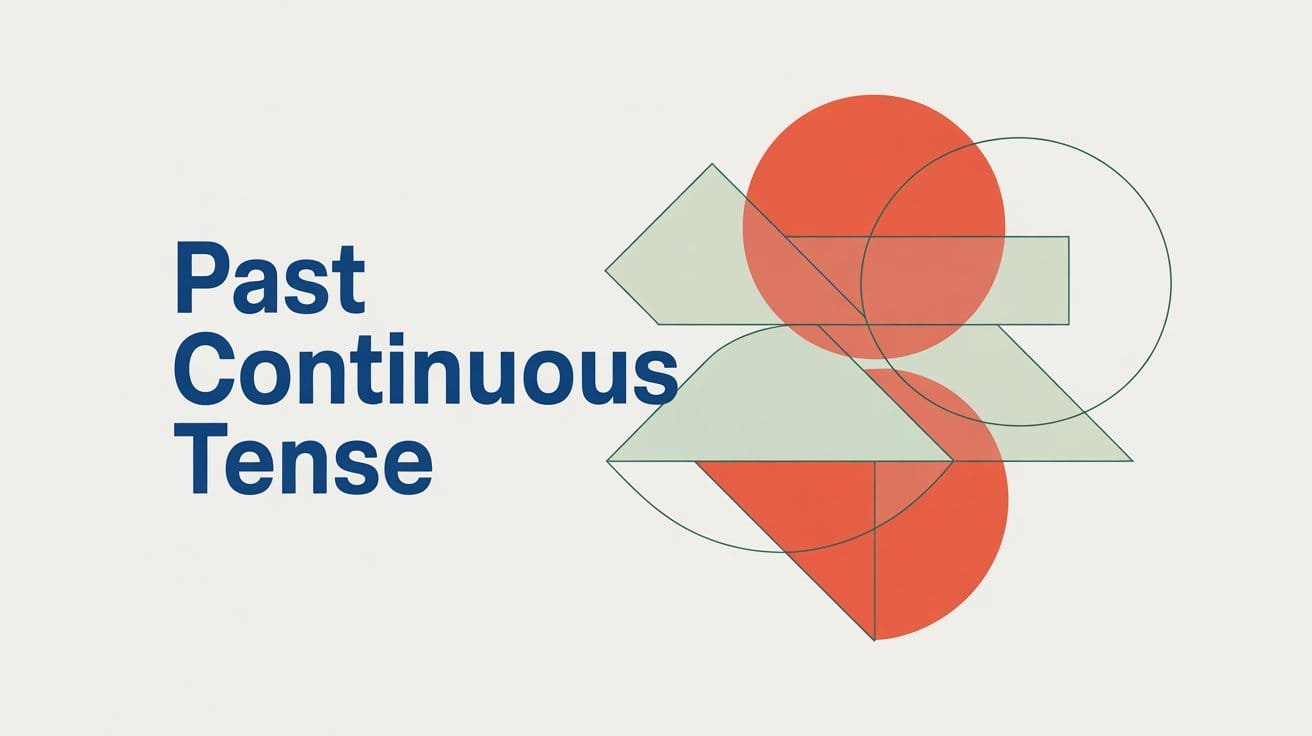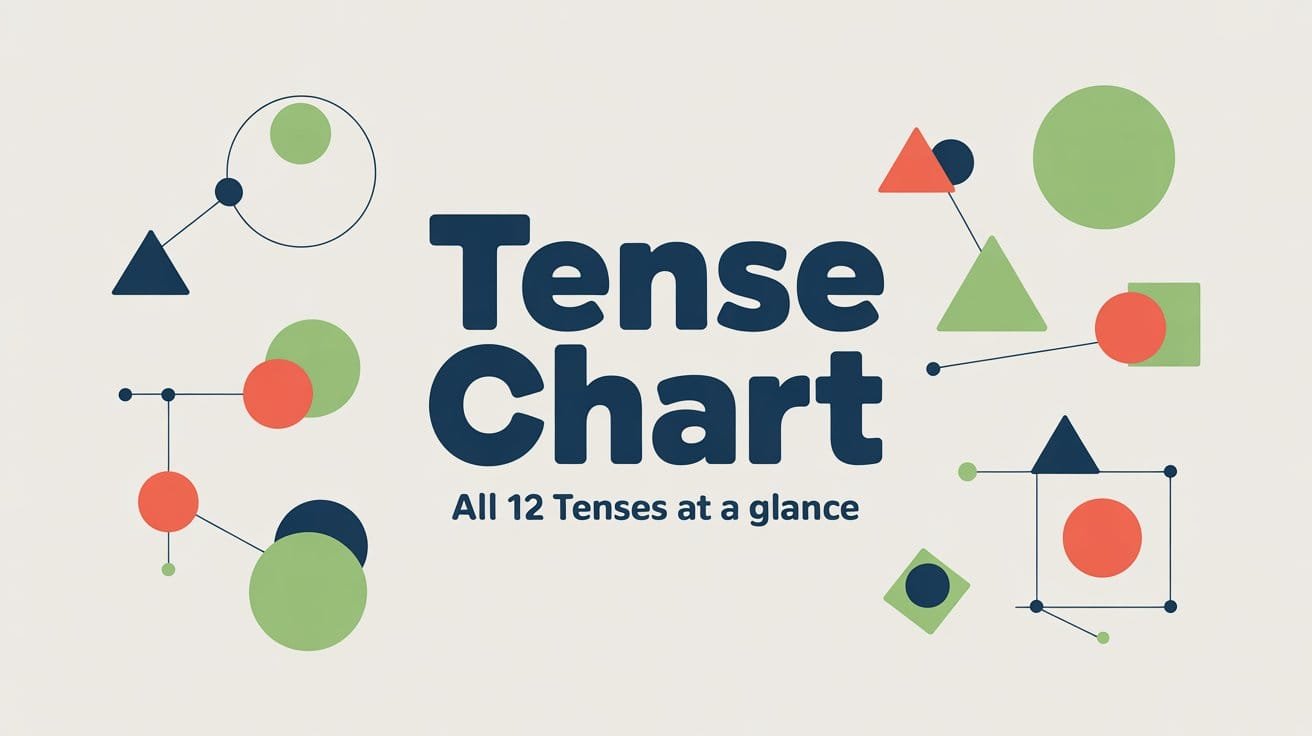The past continuous tense is used to describe actions that were happening at a specific time in the past. It’s often used to show background activity, interrupted actions, or two things happening at once.
For example: “I was writing an email when the lights went out.” In this sentence, the writing was already in progress before the interruption happened.
Structure of the Past Continuous Tense
The past continuous tense describes actions that were in progress at a specific time in the past. It’s formed using the past form of the verb to be (was/were) + the -ing form of the main verb.
Affirmative Sentences
Structure:
Subject + was/were + verb-ing
- Use was with I, he, she, it
- Use were with you, we, they
Examples:
- I was reading a novel at 10 PM.
- She was preparing dinner when I arrived.
- They were playing cards on the balcony.
- We were waiting for the bus in the rain.
Negative Sentences
Structure:
Subject + was/were + not + verb-ing
Examples:
- I was not watching TV at that time.
- He wasn’t listening to the instructions.
- They were not paying attention.
- We weren’t expecting any guests.
Interrogative Sentences
Structure:
Was/Were + subject + verb-ing?
Examples:
- Was she working late yesterday?
- Were you studying for the test?
- Was it raining when you left?
- Were they planning a surprise?
Usage of the Past Continuous Tense
The past continuous tense is used to show that something was happening over a period of time in the past. It often adds context, background, or contrast to another action.
To Show an Action in Progress at a Specific Time in the Past
Use the past continuous to describe what someone was doing at a particular moment.
Examples:
- I was cooking dinner at 7 PM.
- She was walking to the station when it started to rain.
- They were watching a documentary during the blackout.
To Describe Interrupted Actions
Use the past continuous to show a longer action that was interrupted by a shorter one, usually expressed with the simple past.
Examples:
- He was talking on the phone when the call dropped.
- I was writing an email when my laptop froze.
- She was cleaning the house when the guests arrived.
To Show Two Actions Happening at the Same Time
Use it when two or more actions were in progress at once in the past.
Examples:
- They were decorating the hall while we were arranging the chairs.
- She was listening to music while doing her homework.
- I was preparing lunch while he was setting the table.
To Set the Scene in a Narrative
It helps describe the background in a story.
Examples:
- The wind was blowing, and the streetlights were flickering.
- People were dancing, and the music was playing loudly.
Common Time Expressions with the Past Continuous
Certain time expressions are commonly used with the past continuous tense to indicate when the action was happening or to show what interrupted it. These phrases help clarify the time frame and flow of past events.
Common Expressions
- while
- when
- at that moment
- all day / all night
- at [specific time]
- during [a period of time]
- as
Examples
- I was writing in my journal when the lights went out.
- While she was driving, it started to snow.
- They were chatting at that moment.
- We were studying all night for the exam.
- He was working at 9 PM last night.
- As I was walking to class, I saw a friend.
Practice Tips for Using the Past Continuous Tense
To get more comfortable with the past continuous tense, focus on building sentences that describe what was happening at a specific time in the past. These tips can help you build fluency through simple daily practice.
Describe What You Were Doing at a Specific Time
Think about a past moment and write or say what was happening.
Example:
At 6 PM yesterday, I was walking home from the library.
Combine Actions Using “When” and “While”
Practice pairing ongoing and interrupting actions.
Examples:
- I was watering the plants when the phone rang.
- While they were having lunch, the dog barked loudly.
Create Background Scenes for Short Stories
Try describing settings or background events using past continuous verbs.
Example:
The wind was blowing, people were rushing inside, and the sky was turning dark.
Use Personal Memories
Recall a real situation and explain what was happening in the background.
Example:
Last weekend, we were setting up the tent while it was starting to drizzle.
Frequently Asked Questions About the Past Continuous Tense
What is the past continuous tense used for?
The past continuous tense describes actions that were ongoing at a specific time in the past. It’s often used to show background actions, interrupted events, or simultaneous past activities.
Example: She was writing an email when the power went out.
How is the past continuous tense formed?
Use was/were + verb-ing.
Use was with I, he, she, it.
Use were with you, we, they.
Example: They were waiting at the station.
What’s the difference between simple past and past continuous?
Use simple past for completed actions.
Use past continuous for actions in progress at a past time.
Example:
He watched a movie last night. (completed action)
He was watching a movie when the lights went out. (ongoing action interrupted)
Can we use the past continuous with “when” and “while”?
Yes. Use “while” to show two ongoing actions.
Use “when” to show interruption.
Examples:
I was cooking while she was setting the table.
I was cooking when the phone rang.
Do all verbs work with the past continuous tense?
Most action verbs do. However, stative verbs (like know, believe, own) are usually not used in continuous forms.
Example:
✔ I was thinking about the problem.
❌ I was knowing the answer. → ✔ I knew the answer.



